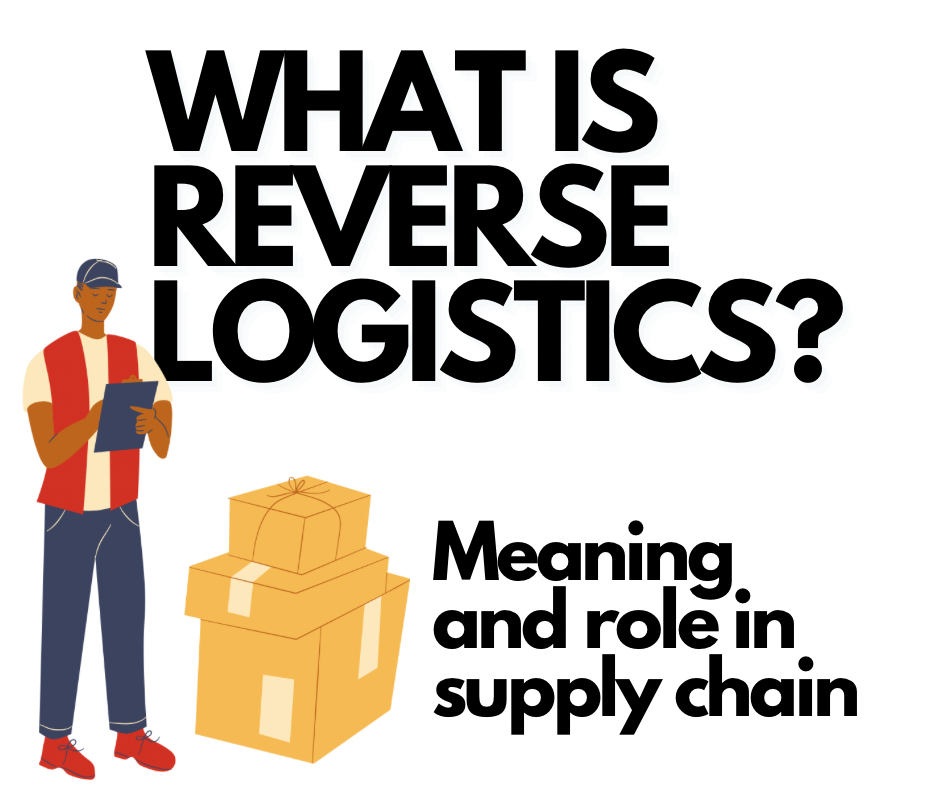What is reverse logistics – Meaning and role in supply chain

As a logistics expert, I understand that managing the supply chain is crucial in optimizing business operations. While forward logistics contributes to the smooth flow of goods and services towards the customers, reverse logistics aims to handle returns, repairs, recalls, and reuse/recycle of products. In this guide, I will explain the meaning of reverse logistics, its role in the supply chain, and strategies for optimizing the reverse logistics process.
What is reverse logistics?
Reverse logistics refers to the process of managing the flow of materials or products from their final destination back to the manufacturer or distribution center. The process includes the reverse flow of physical goods, returns management, repair, and recycling of the products. Unlike forward logistics, where the objective is to move products from the producer to the consumer, reverse logistics revolves around recapturing value from returned merchandise so that it can be re-used, repaired, or re-enter the supply chain through other means.
Role of Reverse Logistics in the Supply Chain:
Reverse logistics plays a crucial role in the supply chain network. Understanding the role of reverse logistics can help businesses improve their processes and increase profitability.
1. Customer Satisfaction: Returns and repairs management can impact customer satisfaction, returns handling processes enhance the customer experience and reduce negative feedback.
2. Cost Management: Through reverse logistics, businesses can maximize the value of returned products, reduce costs associated with disposal and destruction, save on shipping costs, and minimize the cost of carrying damaged inventory.
3. Environmental Impact: Successful reverse logistics can reduce the environmental impact of waste disposal by promoting the re-use and recycling of products.
4. Opportunity for Incremental Revenue: Revamped resale channels, such as secondary markets or B2B sale channels, allow businesses to sell returned or refurbished products at optimal prices.
Strategies for Optimizing Reverse Logistics:
To optimize reverse logistics, businesses should implement a variety of strategies, such as:
1. Develop Fluid Communication Channels: Improved communication channels with customers and other supply chain partners enable better visibility in the reverse logistics process, reducing the risk of miscommunication.
2. Enhanced Returns Process: Simplifying the process of returns for customers through creating smarter returns workflows, simple returns policy, and flexible return methods increases customer satisfaction.
3. Fault Analysis and Regulation Adaptation: Identifying the faults and quality tests of returned products, deciding realistic measures for quality checks, and then adapting reverse logistics processes accordingly.
4. Active Management of Refurbishment/Repair streams: If inadequate management of the refurbishing or repair streams, lead time and costs can rise, and most commonly refurbishing inventory builds up over time to become outdated. Active management of this flow can maximize product value and avoid the build-up of unused inventory.
5. Optimize Inventory: By tracking the reverse flow of products, businesses can design an optimal inventory system that helps manage returns efficiently, reduce inventory-carrying costs, and mitigate the risk of excess inventory.
6. Sustainability: Sustainability is an increasingly critical consideration in reverse logistics, businesses can improve sustainability goals through recycling initiatives, reducing carbon footprint and repurposing recyclable items.
Conclusion:
Reverse logistics is a vital aspect of the supply chain that enables businesses to manage their return, reuse, and recycling operations effectively. Businesses can optimize reverse logistics by implementing efficient strategies, improving communication channels with customers and suppliers, and actively managing refurbishment, repair, and recycling streams. By enhancing the reverse logistics process, businesses can reduce costs, improve customer satisfaction, and enjoy significant environmental benefits while improving their bottom line.




































